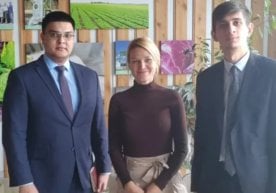
Between January and September 2025, 2.36 million labor migrants left Uzbekistan. This figure marks a 4% increase compared to the same period in 2024.
This information was disclosed by Azizbek Hayitov, Deputy Director of the Payment Balance Department at Uzbekistan’s Central Bank, during a conference on remittances organized by IFAD and the Central Bank. A notable 92% of this migration flow (2.2 million individuals) was directed to three primary countries.
These countries continue to be the main destinations for Uzbek citizens seeking temporary employment. Simultaneously, gradual diversification of labor migration destinations is being observed.
Significant growth in the number of labor migrants to certain countries has been recorded. This development is attributed to the expansion of intergovernmental employment channels with nations such as Germany, Kuwait, France, South Korea, Italy, the United Kingdom, Japan, and Sweden.
Experts provided recommendations to reduce the costs associated with remittances and enhance the financial stability of migrants' families. Among the proposals was the use of remittances as an alternative income source for assessing creditworthiness.
Joint programs between IFAD and the Central Bank aim to improve financial literacy and promote skills in budgeting and saving. IFAD further suggested leveraging international cooperation to negotiate reduced fees with global payment systems and foreign banks.
The growth in labor migration is bolstering the volume of remittances, which play a crucial role in the country’s economy. According to data presented at the conference, remittances reached $15.8 billion between January and October 2025.
This represents a 25% increase compared to the previous year. Overall, by the end of 2025, the global volume of remittances is projected to reach $913 billion.
Read “Zamin” on Telegram!
Ctrl
Enter
Found a mistake?
Select the phrase and press Ctrl+Enter Related news
Information
Users of Меҳмон are not allowed to comment this publication.
Users of Меҳмон are not allowed to comment this publication.













